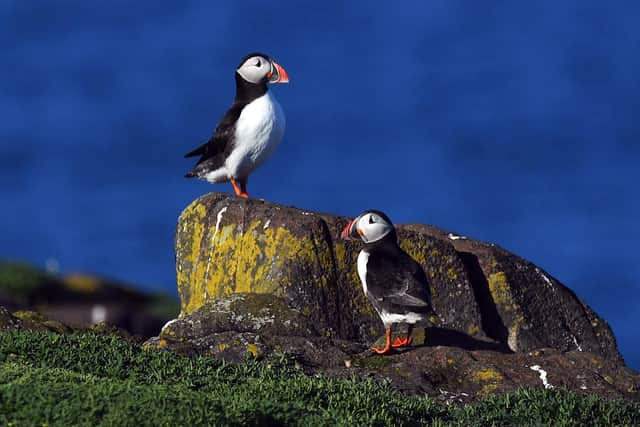Don’t stand by and watch our wildlife vanish - Paul Walton
This article contains affiliate links. We may earn a small commission on items purchased through this article, but that does not affect our editorial judgement.
The establishment of the £65 million Nature Restoration Fund, Scotland’s largest ever fund focused on nature restoration, is particularly welcome. It was therefore surprising and deeply disappointing that the consultation for Scotland’s next Biodiversity Strategy – which will set the ambition for nature right up to 2045 – does an excellent job at setting out the evidence and challenges, but fails to set out meaningful actions for nature’s recovery.
Nature is being lost around the world faster than ever. Scotland, a country world-famous for its wildlife and landscapes, was recently found to be one of the most nature-depleted countries in the world. Whilst much of the loss of nature is historical, we are still losing nature now: since 1970 half of our species have declined, with one in nine at risk of national extinction.
Advertisement
Hide AdAdvertisement
Hide AdThis nature crisis, alongside the twin climate crisis, poses an existential threat: unless we act now, the wellbeing and livelihoods of future generations hang in the balance. Saving nature is also a moral imperative, we cannot just stand by and watch our wildlife vanish.


The strategy’s first gap is on species recovery. Species are the building blocks of living systems. Despite historic losses, Scotland still hosts internationally important populations of wildlife. This has been terrifyingly brought home by the unprecedented bird flu outbreak, which has hammered our seabirds. Scotland holds 60 per cent of the entire world population of great skuas, but these birds have undergone massive and sudden declines. Surely species like these skuas, our gannets and puffins, our threatened wildflowers, bumblebees, and fish, deserve targeted actions for recovery, to ensure future generations can enjoy and benefit from them?
The next gap in the strategy is ecosystem restoration. Scotland’s rivers, kelp beds, machairs, rainforests and other critical ecosystems, are key national assets. They are homes to some of our most iconic wildlife, and yet are degraded and fragmented. We know from some genuinely excellent work on peatlands that the Scottish Government can design, fund and deliver targeted ecosystem restoration. We should tailor and extend that model to other key ecosystems in a phased, rolling programme of ecosystem restoration.
The draft even fails to account for our very best natural treasure, our network of protected wildlife areas. These are our very best places for wildlife and we need them to be actively cared-for, monitored and managed, and their benefits extended across landscapes through nature networks. Yet Protected Areas hardly feature in the draft strategy and, worryingly, the Scottish Government’s commitment to protect at least 30% of Scotland’s land and sea by 2030 isn’t even mentioned, despite that target being a key deliverable of the government’s approach to nature’s recovery.
The strategy also fails to adequately define what we are trying to achieve. The draft includes some welcome high-level outcomes, but no clear targets. It must set quantified, ambitious targets for restoring nature. This will drive collaborative action across sectors, and allow us to know when we are, and when we are not, achieving sufficient progress. These targets need to be enshrined in law in the forthcoming Natural Environment Bill.
Finally, to communicate the urgency and significance of this strategy to all parts of government, we suggest that it should be renamed ‘Scotland’s Nature Emergency Strategy’.
The Scottish Government has delivered some welcome actions, and many welcome statements, on the importance of nature. Hopefully the biodiversity strategy is just a blip, but it needs to be addressed. You can help by completing our e-action at: https://e-activist.com/page/108944/action/1
We urge the Scottish Government to match their welcome rhetoric with action and to grasp this unique opportunity now, before it is too late.
Paul Walton, RSPB Scotland’s Head of Habitats and Species Scotland
Comments
Want to join the conversation? Please or to comment on this article.